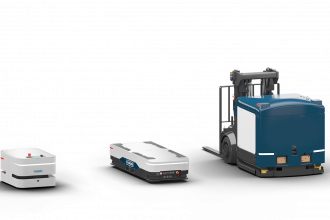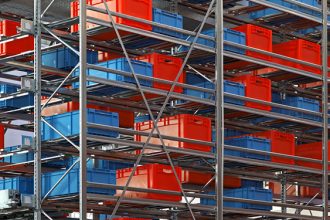How Automated Micro-Fulfillment At The Retail Store Enhances Customer Service

While the retail headlines of 2020 were dominated by unprecedented growth in e-commerce, 2021 has marked the return of the brick-and-mortar store shopper. According to research from The NPD Group, “In 2020, total discretionary retail sales grew 9%; the e-commerce channel contributed 87% of that growth. Moving into 2021, the retail sector continued expanding — year-over-year sales grew 13%. However, in-store sales contributed 61% of that growth.”
That said, the same report notes that online sales remain 38% higher than they were in July 2019, prior to the onset of the pandemic. Which means creating a seamless, omni-channel shopping strategy — one that ensures a superior customer service experience no matter how a consumer chooses to purchase — has become crucial for both grocers and general goods retailers. Whereas many retailers have operated their store and e-commerce businesses separately, they’ve now come to realize that customers expect a seamless, unified, and transparent access to fulfillment regardless of how they shop.
To accommodate consumer expectations for fast and free home delivery, buy-online-pickup-in-store (BOPIS), curbside pickup, or in-store shopping (not to mention a variety of options for returns), retailers are re-evaluating their inventory networks and their store formats. Operating a few, centralized distribution hubs is no longer the most cost-effective or time-efficient way to serve today’s post-pandemic customer. Instead, retailers are reallocating lesser amounts of inventory across more, smaller, and more regionally-placed locations — including leveraging their existing brick-and-mortar square footage — to bring products closer to the customers and save time in delivery.
In many cases, today’s brick-and-mortar stores are increasingly integrated with digital retail, serving both in-person customers and filling online orders. However, just as retail and grocery warehouses and distribution centers (DCs) are struggling to attract and retain qualified, reliable hourly labor, so too are stores. With a limited number of available associates, it can be a challenge for store staffers to pick items for online orders and serve in-person customers simultaneously and effectively. Further, retail store square footage has historically been dedicated to displaying of goods with limited space in the back for excess inventory.
As a response to these challenges, retailers have begun to downsize the amount of retail floorspace dedicated to in-person shopping and deploy automated micro-fulfillment solutions at the store level. Smaller sales floors require fewer associates to staff them.
Further, the highly-dense automated storage and retrieval system (ASRS) that comprise micro-fulfillment systems often utilize a goods-to-person fulfillment approach — presenting required inventory to an associate who selects the required item from a storage tote and places it in either a shipping carton or bag or a captive container held at the front desk for customer pickup. This eliminates the need for a staffer to search for ordered products within the store aisles. They also allow more inventory to be stored in a compact footprint. Micro-fulfillment systems also allow associates to be more productive in filling digital orders, giving them more time to assist in-person customers.
Want to learn more? A recent article in MHI Solutions magazine, “Rethinking Retail Stores’ Footprint in the Age of Curbside Pickup,” authored by MHI’s Solutions Community, discussed how retailers are leveraging automation in brick-and-mortar stores to ensure a seamless omni-channel customer experience.
Solutions Community members are the industry’s thought leaders on automation, software, hardware, equipment and services that support a fully integrated supply chain. This includes suppliers, integrators, consultants, media, academia and users. They collaborate on solutions worldwide and in virtually every major manufacturing and distribution sector.



